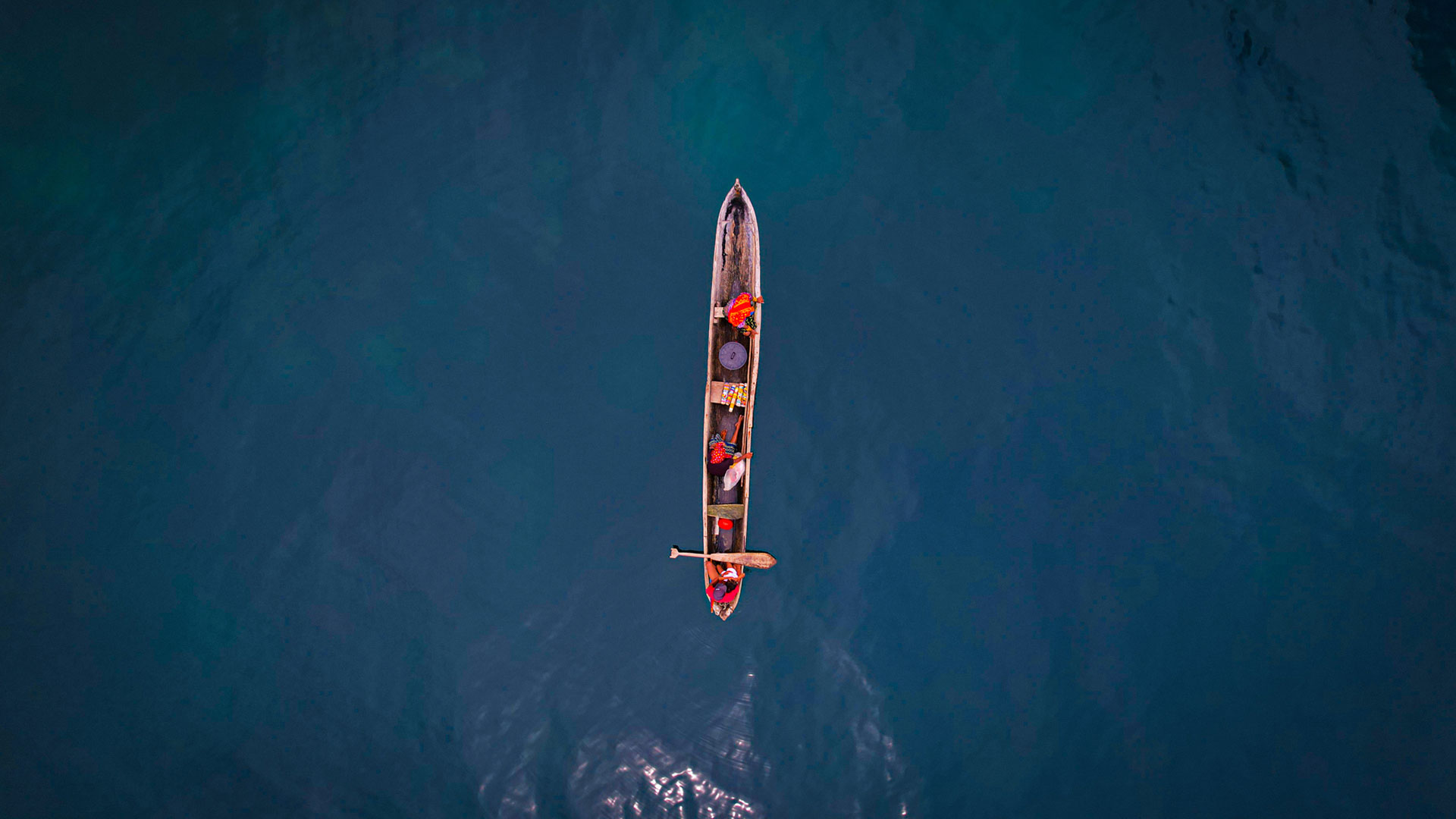
Stopover in the heart of the mythical San Blas archipelago
An isolated and threatened archipelago
Thanks to a collaboration with Legacy Forum, the Plastic Odyssey team had the privilege of visiting this remote part of the world, where the devastating effects of climate change are already being felt, with islands disappearing beneath the sea and plastic pollution ravaging the coastline.
On arrival, we dropped anchor just a few kilometers from the San Blas, a special moment for Plastic Odyssey. It didn’t take long for the pirogues to come and see us, which gave us the opportunity to meet Pali. Originally from this small island paradise, Pali is a resident and owner of Tubasenika Island, one of the 18 tourist islands not far from the boat. This opportunity gave us the chance to talk with him, to better understand the reality of this people living in a sanctuary preserved by UNESCO.
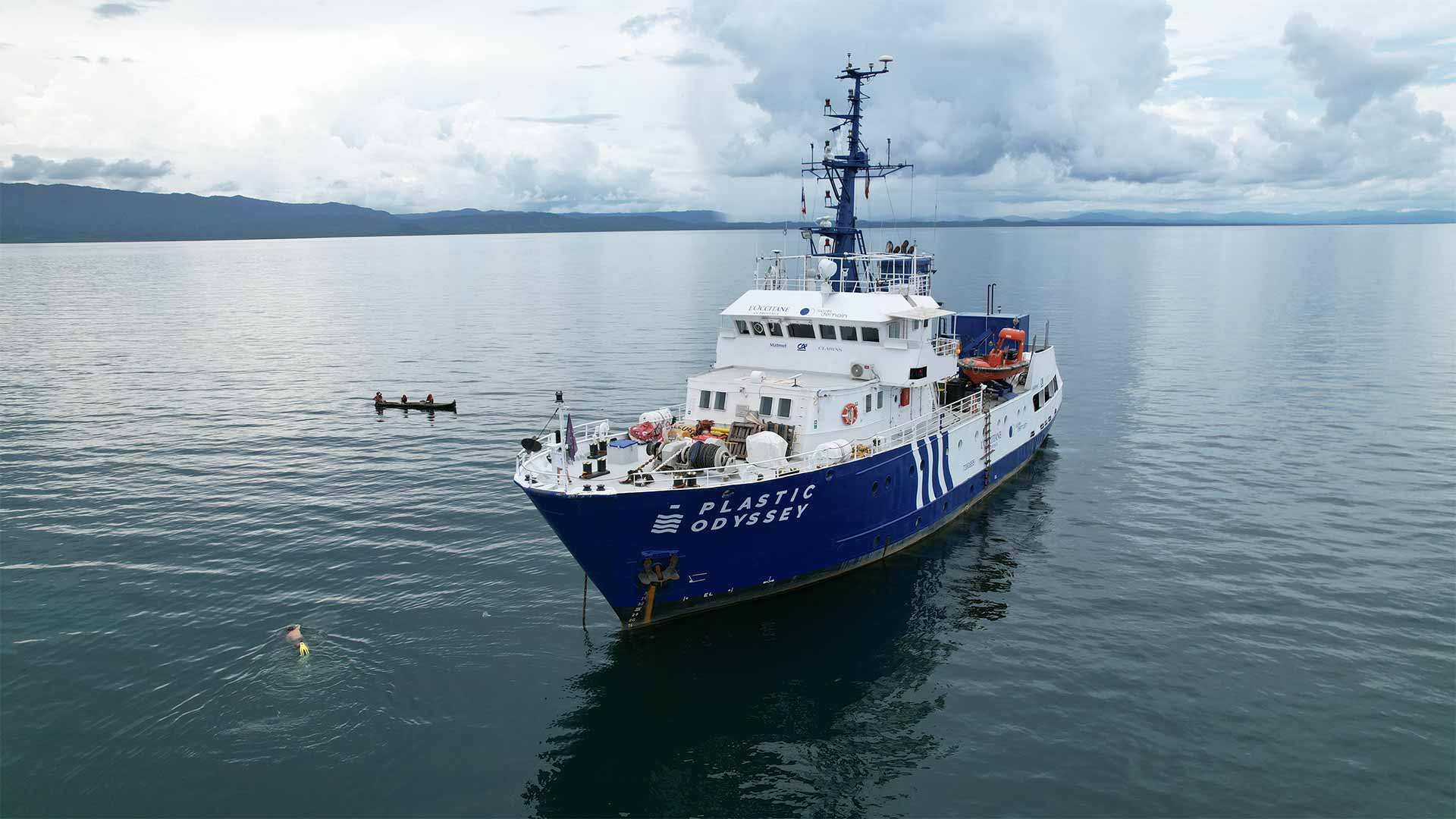
The Gunas, the people who will never give up
In the 16th century, the Gunas arrived on the San Blas Islands, and since that day, they have remained there, resisting all hardships. Despite territorial disputes and foreign invasions over the years, they have always prevailed, achieving their greatest victory in 1938: independence from Panama. The history of this indigenous people makes them unique in the world, thanks in particular to their autonomous status, which continues to this day. In addition, each island operates as a separate entity, headed by a chief who is responsible for the decisions that concern him or her. However, this particularity presents a number of challenges when it comes to managing environmental issues, as we found out during our stopover.
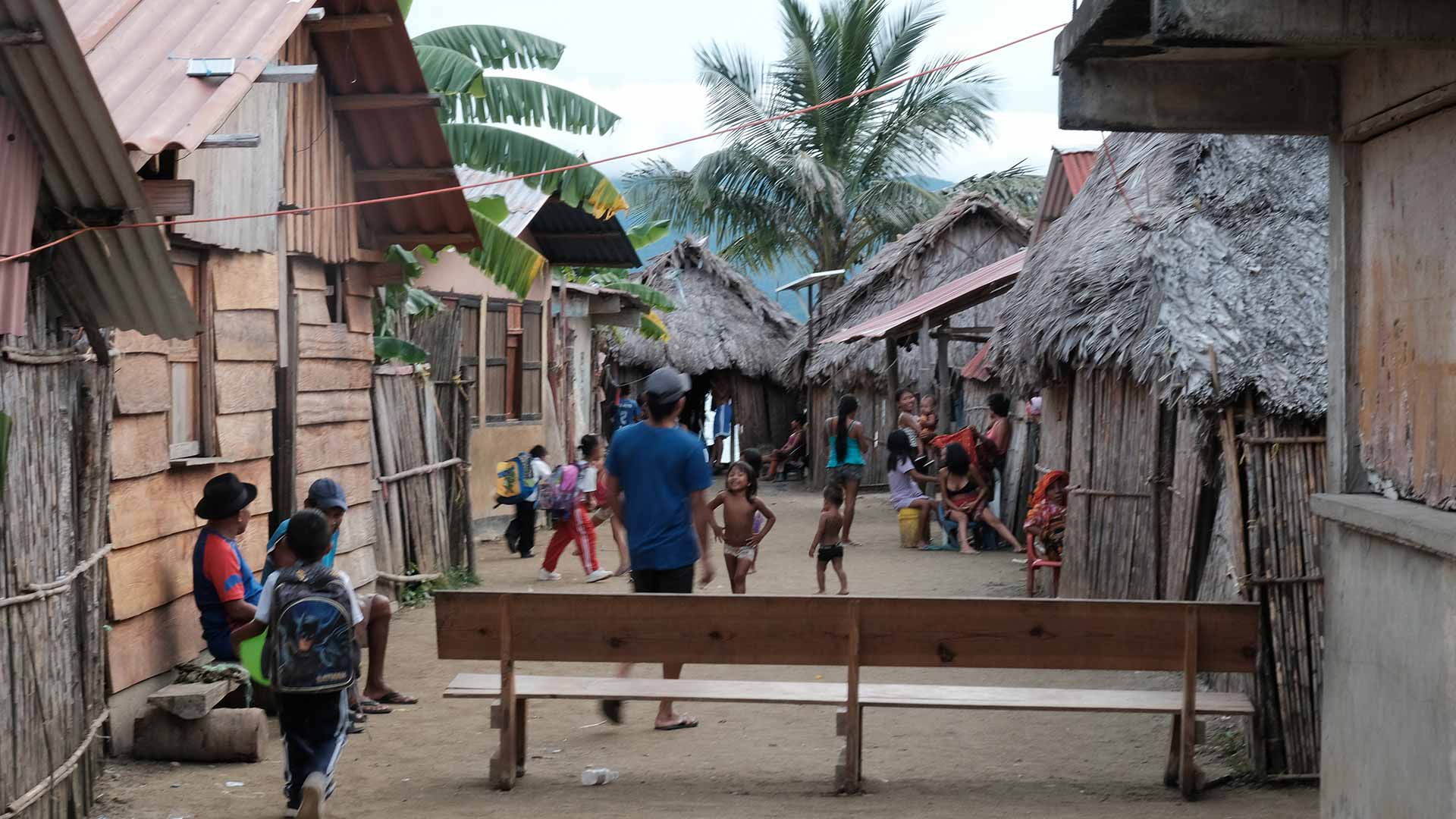
Idyllic islands fall victim to waste
The Gunas have always lived by the rhythm of the islands, relying on fishing, fruit trees and whatever else the land has to offer. However, when the first consumer products appeared in the San Blas, no one thought to inform them of the harmful effects this waste could have on the environment:
“We have continued to throw our plastic bottles and chip bags on land and into the sea, just as we used to do with our banana peels. These behaviors have been passed down from generation to generation, and today we face contaminated islands, with no way to manage our waste sustainably.” Pali, chief of Tubasenika Island, tells us.
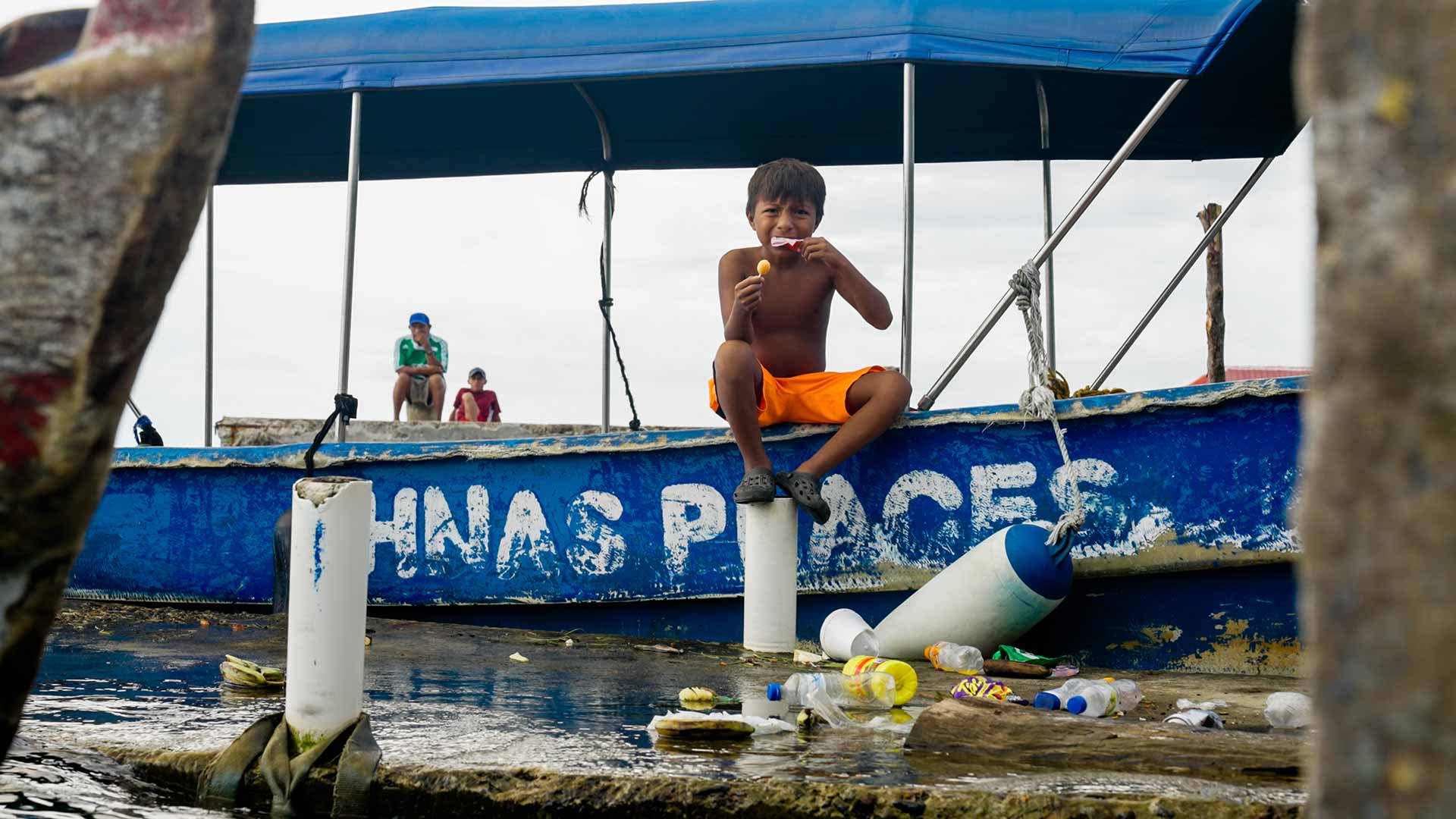
On the island of Carti, the most populous of the archipelago, there is no waste management system. Everything is thrown into the sea and contaminates the shoreline. Inhabitants live in unsanitary conditions, leading to viruses and diseases such as dengue fever.
“Since I started working for the conservation and protection of the environment and marine ecosystems in 1994, I’ve seen the islands changed drastically: plastic waste has invaded the land as well as the sea, rising seas have engulfed several islands, there are hardly any fish left and the coral is virtually all dead.” According to Ramiselia Ramírez, marine biologist.
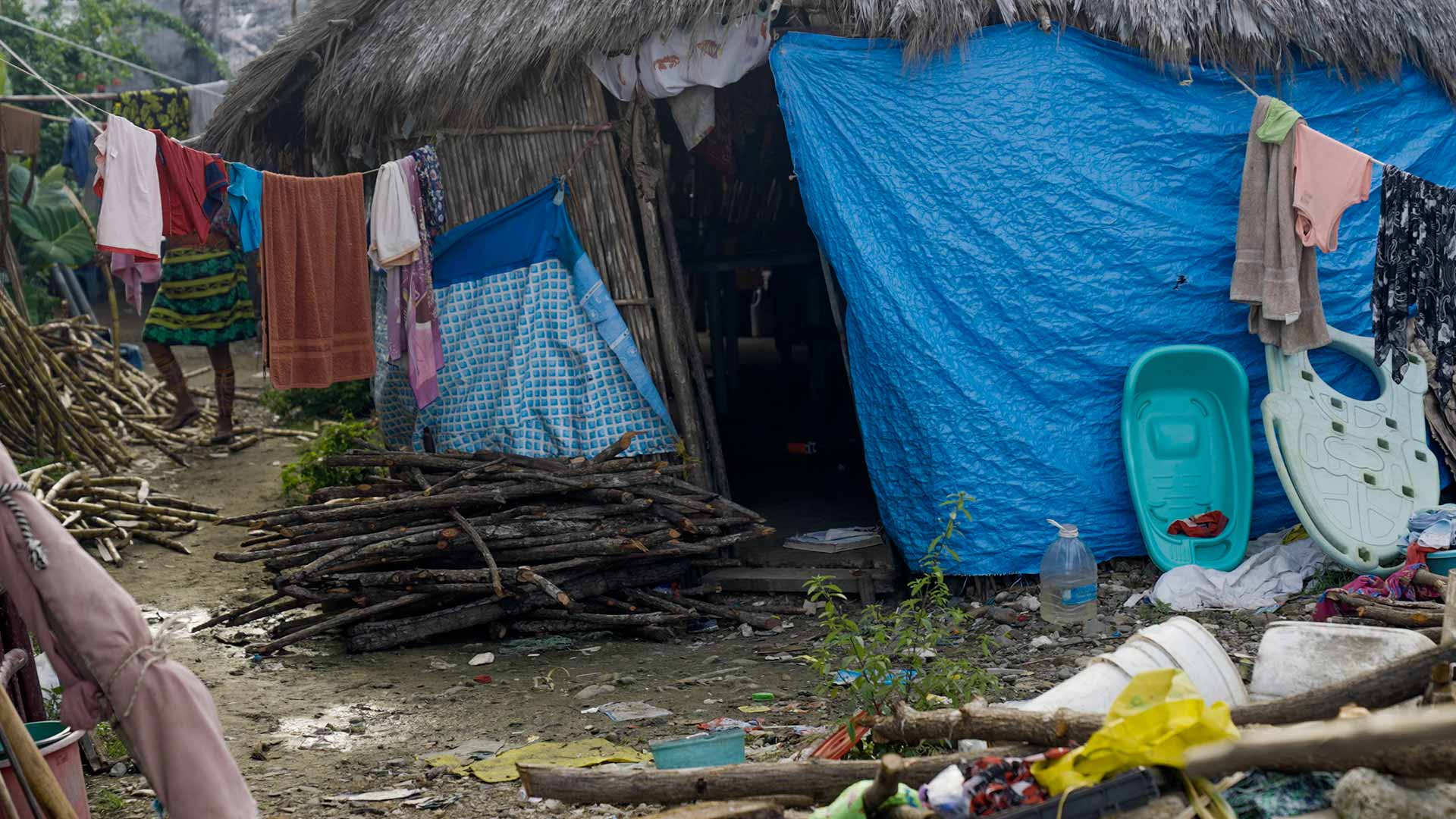
In 10 years’ time, some IPCC reports predict the total disappearance of the islands and the relocation of their inhabitants. Unfortunately, the Gunas are the first victims of the rising waters. This is already the case for more than 300 families who have been relocated to the coast and are subject to the loss of their culture and identity.
The young Gunas community: hope for a brighter future
Despite these observations, we were touched by the interest of the young Gunas in being part of the solution. Together, we organized a garbage collection to raise awareness about plastic. It was a deeply moving experience, as the children’s poignant testimonials reflected a profound awareness of their reality:
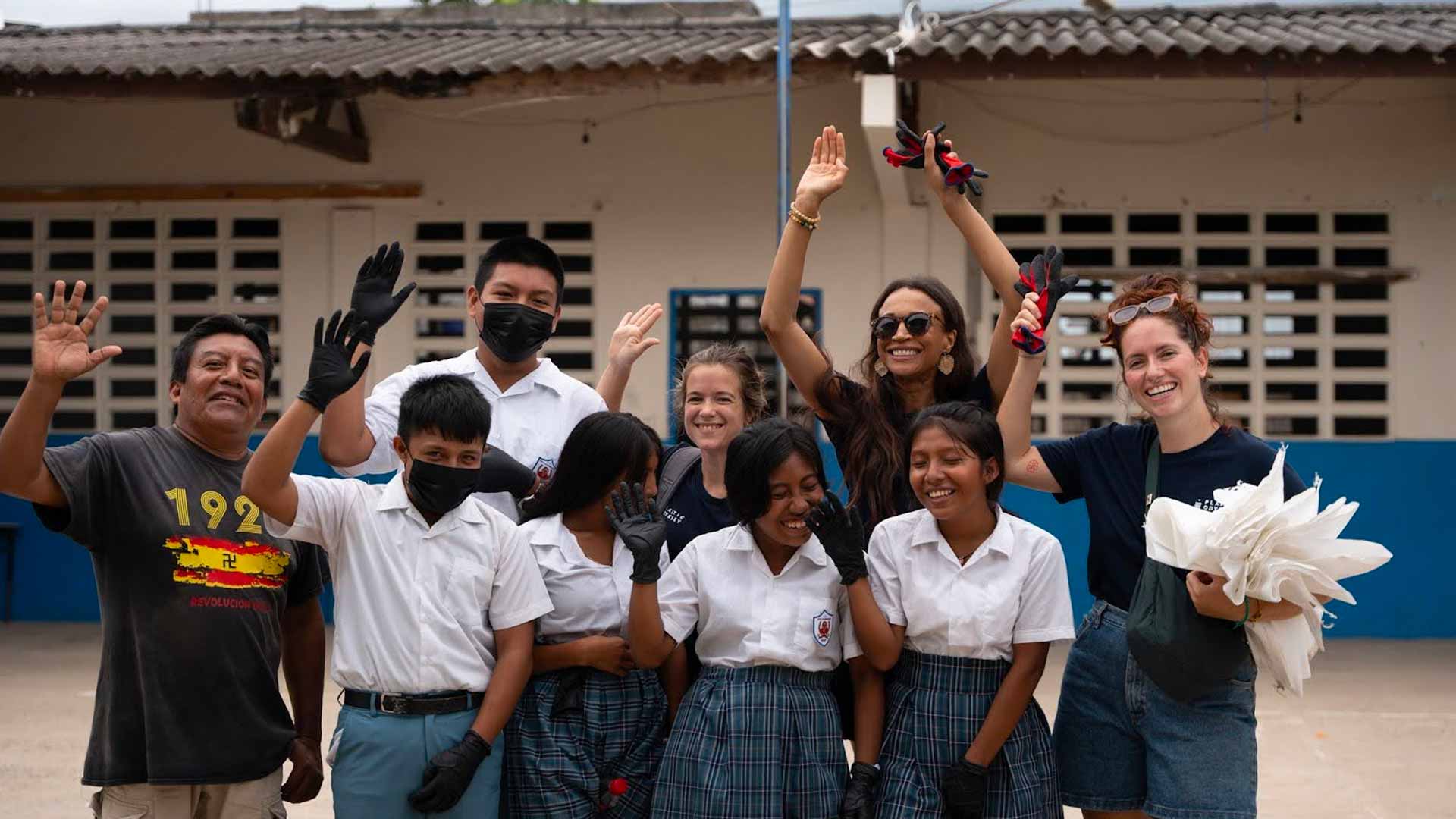
“This is the first time I’ve taken part in a collection, I don’t know how to do it, I don’t know about it, but I realize how dirty and full of garbage our island is. I feel sorry, I feel bad for the earth.” confides a young Guna of about twelve.
In addition to waste collection, Plastic Odyssey has opened its doors to several school groups. The children were impressed to get on such a big boat and discover what can be created with plastic waste. We could see the sparkle in their eyes and their desire to find solutions for their islands, their home.
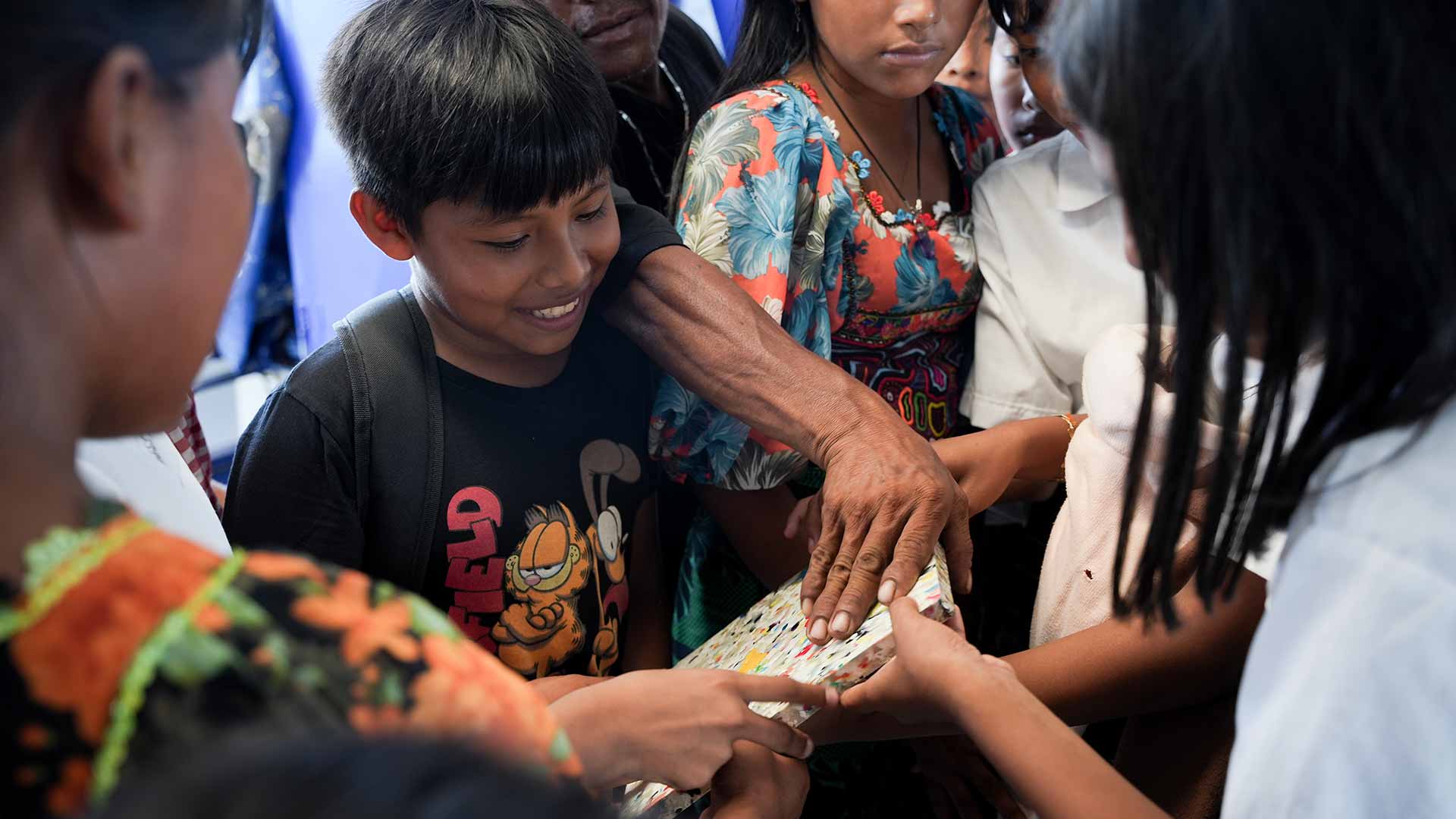
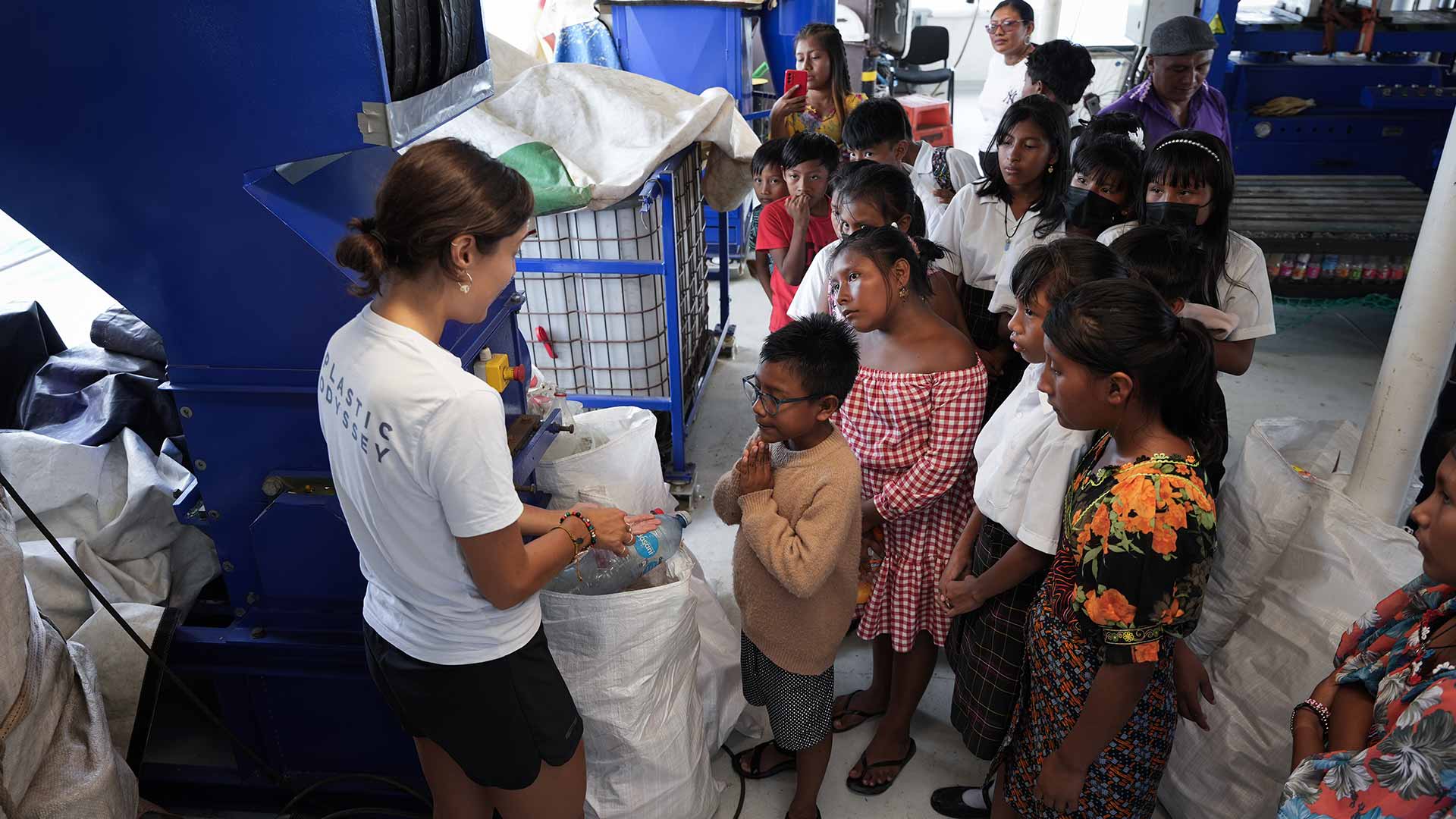
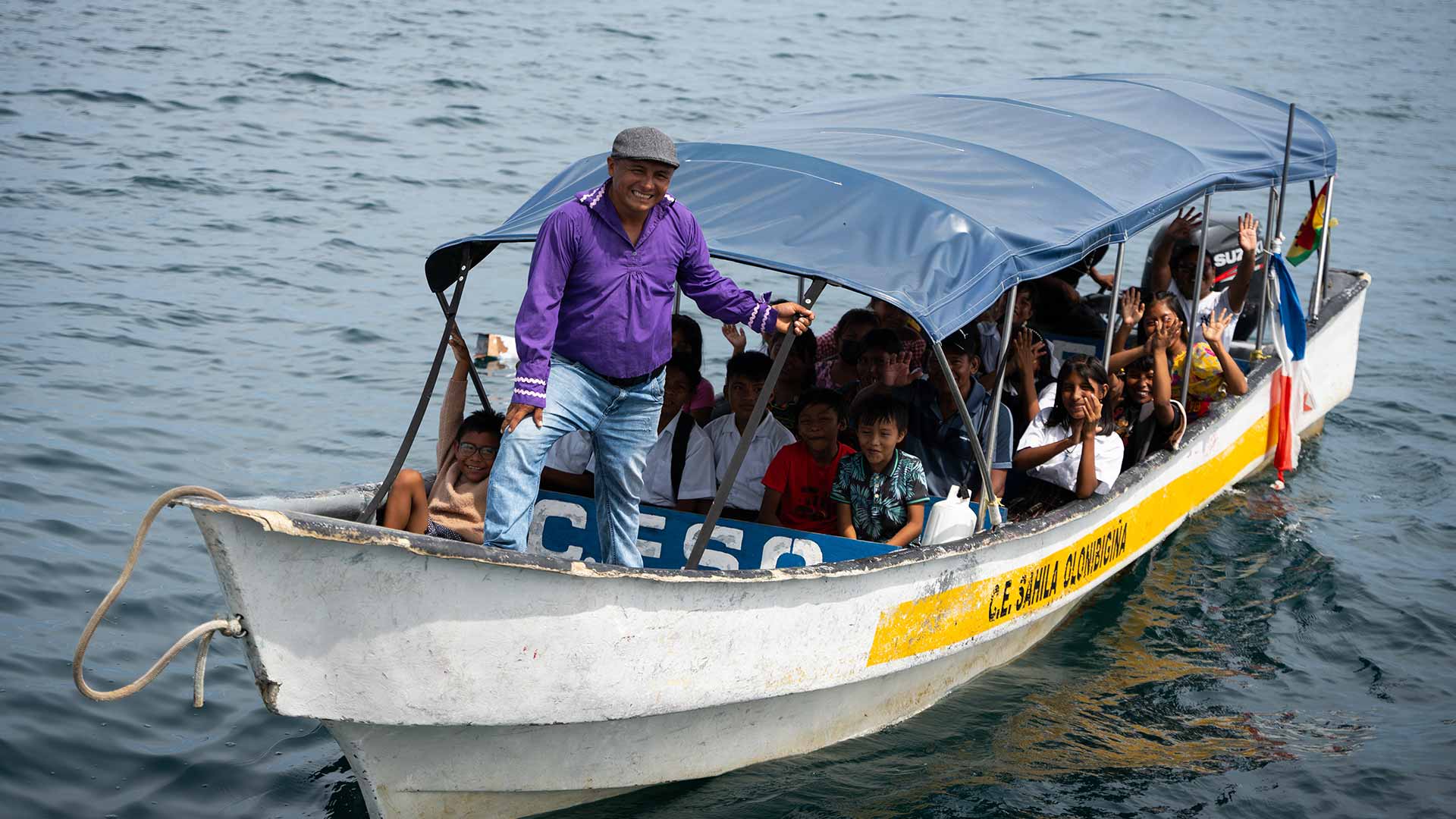
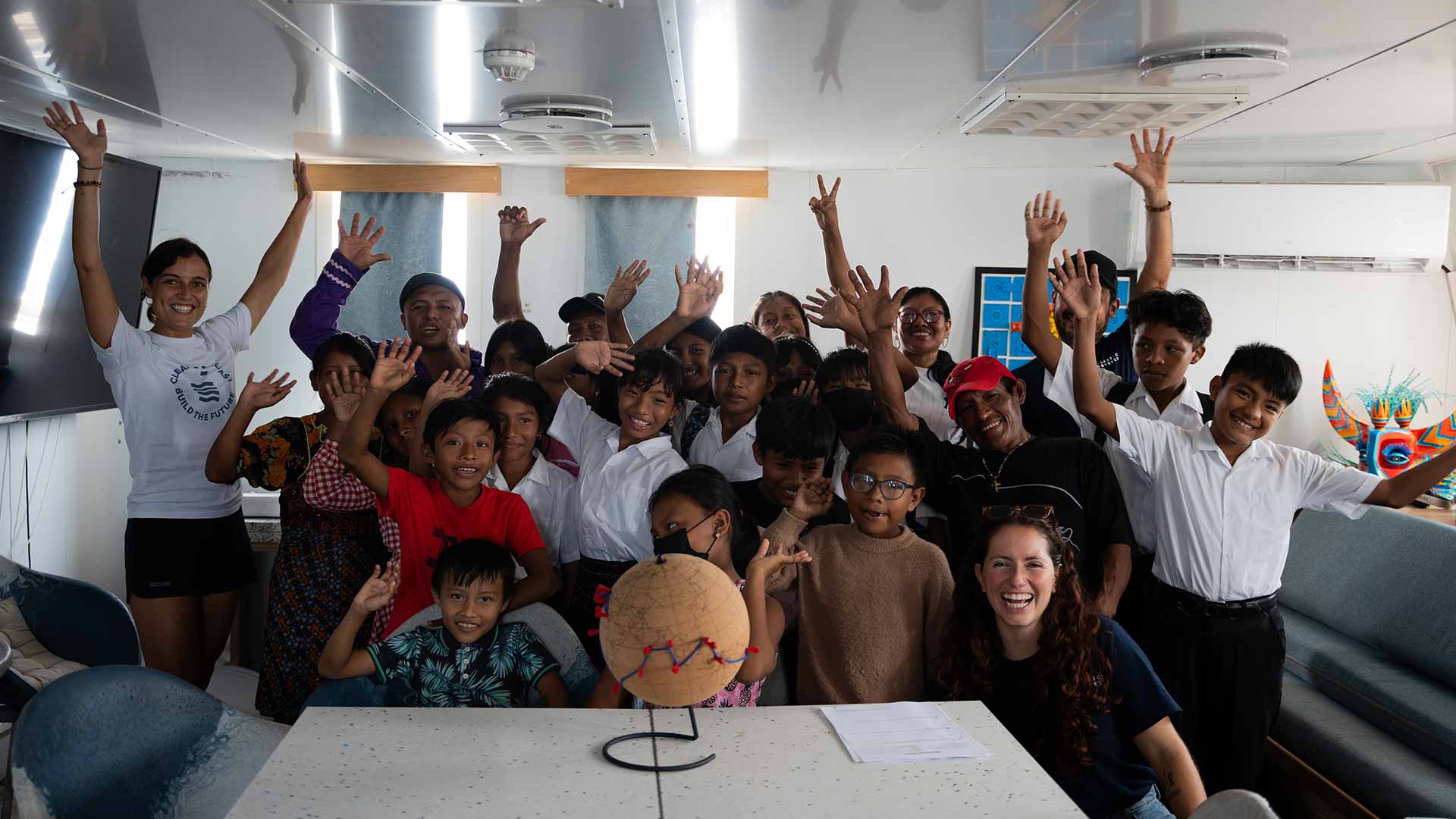
Our visit to the San Blas was marked by a meeting with the Gunas, a people who have been resilient for centuries, but are now facing the ravages of climate change. In the face of this colossal challenge, the Guna youth embody for us a glimmer of hope, carrying within them the potential for a brighter future for their beloved archipelago.
